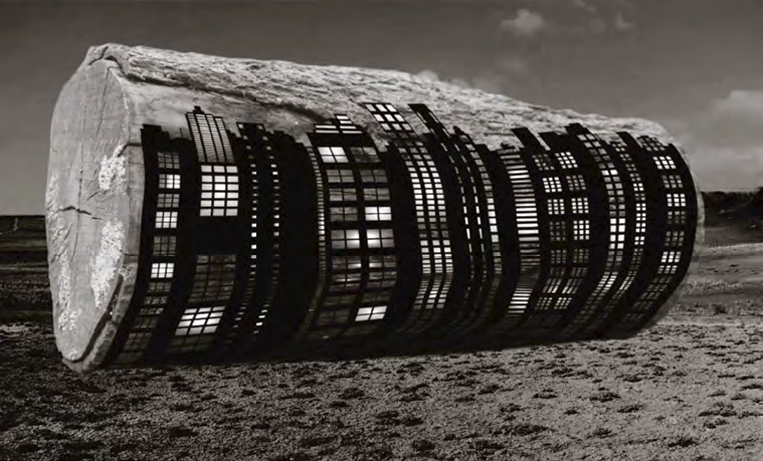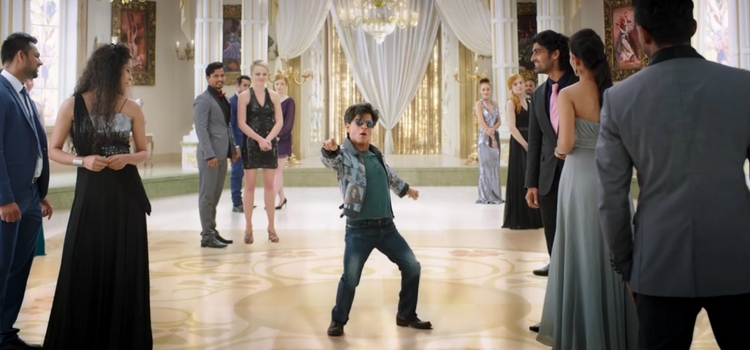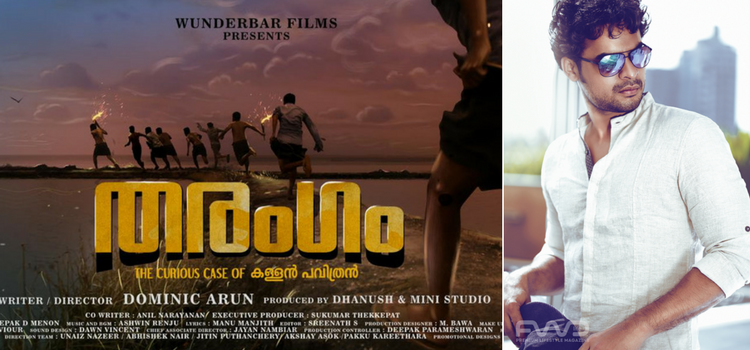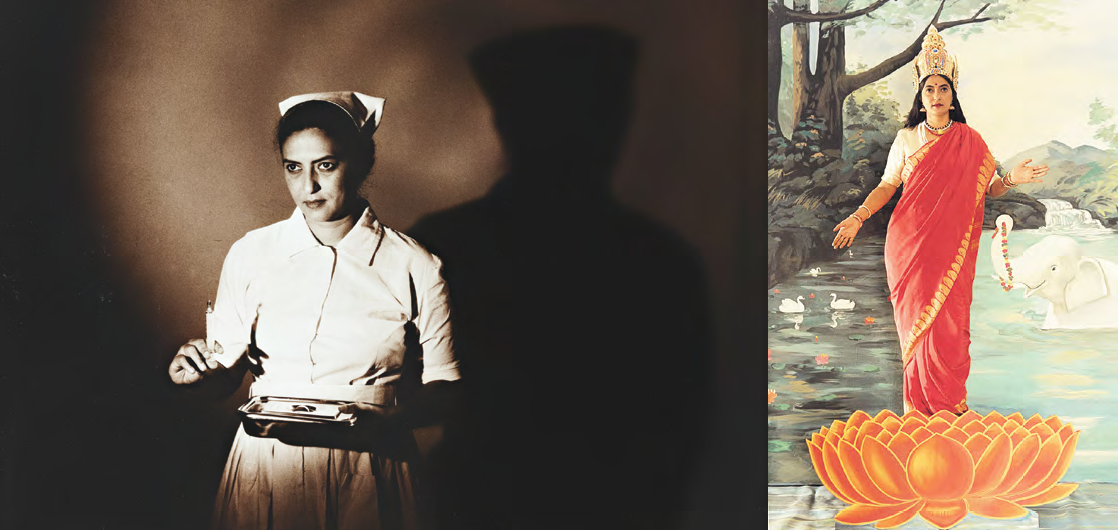Art
In the Mind of an Artist
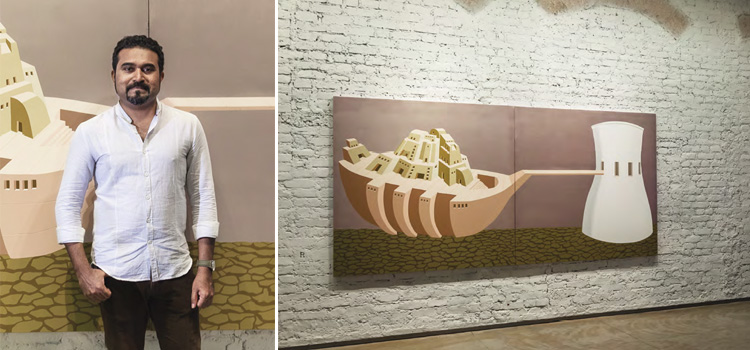
Gigi Scaria, talks to FWD about his art, ideology and his latest exhibition of art at Gallery Chemould titled Ark.
Gigi Scaria’s was born in Kothanalloor, Kerala, India in 1973, Gigi received his B.F.A in painting from the College of Fine Arts in Thiruvananthapuram and his M.F.A. in painting from The Jamia Millia University in New Delhi.
An artist of international acclaim, he has received numerous awards, residencies, and honors internationally.
Could tell us about Ark? Where does the idea of it come from?
The idea of Ark comes from the biblical story of Noah. A major idea that Ark contains is that of the annihilation of the world and a new beginning, there on. It talks about the entire humanity being wiped off from the face of the earth and only the memories being carried forward in an Ark. From the memories, one looks for a new beginning, trying to make it better than the past. In that sense, even the architectural element comes in as you conceive something new. Ark talks about a new civilization formed in a purely conceptual sense. Also, this is a story told by every civilization.
How long has the idea been there? How has it evolved from the biblical idea of the Ark?
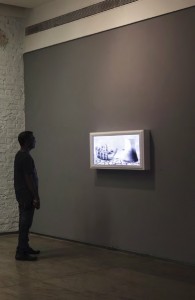 It obviously comes from my childhood memories of the story that I read and heard. But the understanding that I have developed working on the urban structure and socio -political dynamics, gives it a new light. In Ark, I have a set of graphite drawings, paintings, and videos, where the videos are actually the extension of paintings. I created my paintings and then animated videos of similar kind of imagery, making it seem like an extension.
It obviously comes from my childhood memories of the story that I read and heard. But the understanding that I have developed working on the urban structure and socio -political dynamics, gives it a new light. In Ark, I have a set of graphite drawings, paintings, and videos, where the videos are actually the extension of paintings. I created my paintings and then animated videos of similar kind of imagery, making it seem like an extension.
So, in many ways I am juxtaposing the old idea of the Ark with the contemporary. Today we are facing the brunt of issues right from wars and destruction to an impending environmental catastrophe. I think this brings back the Ark into relevance. If you remember, the seed bank in Norway was opened during the Syrian refugee crisis. So you see, that Ark becomes an element of archiving your memory, your culture. The Ark bears testimony to the fact that a civilization cannot function as an independent entity, it always has memories that humanity carries along.
You seem to enjoy working in a variety of mediums. How has this come about?
Yes, I work with different mediums. Though I trained as a painter, I was equally interested in sculpting and cinema. Certain areas and certain thoughts can be expressed only in a certain medium. Though I have dwelled in different mediums, I do it simultaneously and not one medium at a time. It always depends on the subject and the idea that I am working on.
The Elevator is one work where you have used the medium of video to its limit, could you talk about this work?
The elevator was exhibited in Venice Biennale in 2007, where it was part of the India Pavilion. The whole work, as the name suggests, is about an Elevator, with three battery projection. It is a real elevator that is illuminated by the battery projections. As the video starts moving, it gives you the feeling of being elevated. And as it moves, it gives you views of interiors of different households; the upper- class household, the middle class, and the downtrodden and as you reach the top, it gives you the view of an entire city. The core idea of The Elevator is the issue of class and hierarchy. Elevators are plainly about going up or coming down. An elevator never gives you the parallel view. I think that represents the perspective of modern economies, nations, and media, where numbers are all that matter. With The Elevator, I tried to incorporate a parallel view into an elevator.
How do you view class and hierarchy? Are you willing to accept it as an inevitable reality of our socioeconomic system?
Conventionally, we have always looked at progress and development in terms of numbers. But the recent political developments give you a hint that this archaic idea is being questioned. People are increasingly becoming aware and emotionally connected, so undermining emotions is not something you can do anymore. The way I see it, leaders who just look at numbers, even with all their confidence and arrogance, are bound to fail.
How has Kerala influenced you?
Kerala has not influenced but made me. It is Kerala that has helped me develop my perspective and intellectual understanding; it is from this space that I look at things elsewhere. Though I have not been living in Kerala, I have never been alienated from it. I was always a voracious reader of Malayalam literature while in Kerala and still continue to do so. I still have a fair idea about the new books coming up and so on.
As somebody who has lived in Kerala, how do you view traditions? What is your take on the glorification or demonization of it?
All over India, tradition is such a big thing. It is something that we have to negotiate day in and day out and many a times, it’s a hindrance. It might be an exotic thing for Westerners and the tourism industry but living with it is a different game altogether. The idiosyncrasies involved in keeping the traditions alive are a lot of troubles. When it comes to caste or religion, it has all got so complicated that we don’t know what tradition is, what religion is and what other ideological matters are, it is all fused into a Kichdi. And also there is the unrest caused by religious strife and extremism. If you ask me, I would probably say that all religions should be banned. If that cannot be accommodated then I shall advocate the path of Sufism, where when one can stay religious yet refrain from the extremism of any sort.
Art
Navratri 2024: Celebrating the Nine Colours and Their Significance

Navratri, the festival that spans nine nights, is one of the most auspicious and widely celebrated festivals in India. Dedicated to the worship of Goddess Durga in her nine forms, each day of Navratri holds special significance, marked by a distinct color that carries deep spiritual and cultural meaning. As we prepare for Navratri 2024, let’s explore the nine colors associated with each day, their significance, and how they inspire devotion, positivity, and harmony.
Day 1: Yellow

On Thursday, embrace the uplifting energy of yellow as you celebrate Navratri with optimism and joy. This warm and cheerful color symbolizes happiness and radiates positivity, keeping you in high spirits throughout the day.
Day 2: Green

On Friday, wear green, a color that represents nature, growth, and harmony. It evokes a sense of peace and serenity, while also symbolizing new beginnings. Let the vibrant energy of green invite tranquility and the blessings of the Goddess into your life.
Day 3: Grey

Saturday calls for the subtle sophistication of grey. This balanced color keeps you grounded and calm, symbolizing composure and understated elegance. It’s perfect for those who want to participate in Navratri with grace while making a refined style statement.
Day 4: Orange

On Sunday, adorn yourself in the vibrant hue of orange. This color embodies warmth, exuberance, and positivity. Wearing orange during Navratri invokes an upbeat energy, bringing vitality and a lively spirit to your celebrations.
Day 5: White

Start your Monday with the purity and serenity of white. Associated with innocence and spiritual clarity, this color invites inner peace and helps you connect with the divine blessings of the Goddess, offering a sense of security and calm.
Day 6: Red

On Tuesday, red takes center stage, symbolizing passion, love, and strength. As one of the most auspicious colors, red is often offered to the Goddess in the form of a Chunri. Wearing red fills you with energy, vigor, and the vibrant spirit of Navratri.
Day 7: Royal Blue

Wednesday’s color is royal blue, representing elegance, richness, and tranquility. This deep, vivid shade of blue exudes confidence and sophistication, making it an ideal choice for those who want to celebrate Navratri with style and grace.
Day 8: Pink

On Thursday, don the charming hue of pink, a symbol of universal love, affection, and harmony. Pink is a color that adds a soft touch of warmth and approachability, making it perfect for creating a loving and joyful atmosphere during the festivities.
Day 9: Purple

On the final day of Navratri, purple takes the spotlight. Associated with luxury, nobility, and grandeur, purple invites opulence into your life. Wearing this regal color while worshipping Navdurga bestows blessings of prosperity and richness, making it the perfect way to end your Navratri celebrations.
Art
Exploring the Rich Tapestry of Indian Art: A Journey Through State-Wise Traditional Paintings

India’s artistic heritage is a vibrant mosaic, reflecting the diverse cultural traditions of its states. Each region has its unique style of painting, with techniques and themes passed down through generations. Let’s delve into some of the most iconic traditional paintings from different states of India.
1. Madhubani Painting (Bihar)

Originating from the Mithila region of Bihar, Madhubani painting is known for its intricate patterns, bold colors, and themes inspired by nature, mythology, and folk tales. Traditionally, these paintings were done on mud walls, but now they are also created on cloth, handmade paper, and canvas.
Distinctive Features: Use of natural dyes, double outlines, geometrical patterns, and motifs like flowers, animals, and deities.
2. Pattachitra (Odisha and West Bengal)

umaid art
Pattachitra, meaning ‘cloth painting,’ is an ancient art form from Odisha and West Bengal. These paintings depict mythological narratives, especially around Lord Jagannath, and are characterized by their intricate details and mythological themes.
Distinctive Features: Fine detailing, elaborate borders, vibrant use of colors, and the use of natural ingredients for dyes.
3. Warli Art (Maharashtra)
Warli art is a form of tribal painting from Maharashtra, traditionally done by the Warli tribe. It primarily uses white pigment on a mud base to depict daily activities, such as farming, hunting, and dancing, in a minimalistic yet expressive manner.
Distinctive Features: Simple geometric shapes like circles, triangles, and squares, which represent different elements of nature and human life.
4. Tanjore Painting (Tamil Nadu)

Tanjore (or Thanjavur) paintings, originating from Tamil Nadu, are known for their rich colors, surface richness, compact composition, and use of gold foil. They often depict Hindu gods and goddesses, with a focus on Lord Krishna and other deities.
Distinctive Features: Use of vibrant colors, gold leaf, and inlay work with semi-precious stones on wooden boards.
5. Pichwai Painting (Rajasthan)

Pichwai paintings, hailing from Rajasthan, are intricate paintings that portray the life of Lord Krishna, especially in the Nathdwara temple. These paintings are traditionally done on cloth and used as wall hangings behind the deity in temples.
Distinctive Features: Detailed depiction of Lord Krishna’s life, use of bright colors, and the portrayal of various scenes from the Bhagavad Purana.
6. Phad Painting (Rajasthan)
Phad painting is a narrative scroll painting from Rajasthan, where the stories of folk deities like Pabuji and Devnarayan are depicted. The paintings are done on long pieces of cloth and are used in religious storytelling.
Distinctive Features: Bold lines, earthy colors, and the depiction of deities and their exploits.
7. Kalamkari (Andhra Pradesh)

Kalamkari, literally meaning ‘pen work,’ is an art form from Andhra Pradesh that involves hand-painting or block printing on fabric. The themes are largely mythological, with stories from the Ramayana and Mahabharata being common subjects.
Distinctive Features: Intricate handwork, natural dyes, and a distinctive color palette dominated by earthy tones.
8. Pithora Painting (Gujarat and Madhya Pradesh)

Pithora paintings, created by the Rathwa and Bhilala tribes of Gujarat and Madhya Pradesh, are done on the walls of their houses. These paintings are part of a ritual to invite the gods and ensure prosperity and happiness.
Distinctive Features: Vibrant colors, ritualistic significance, and the depiction of gods, animals, and scenes from daily life.
9. Chitrakathi Painting (Maharashtra)

Chitrakathi is a traditional art form from the Maharashtra-Karnataka border, where paintings are used as visual aids in storytelling. These paintings often accompany performances that narrate stories from epics like the Ramayana and Mahabharata.
Distinctive Features: Simple yet expressive figures, use of natural colors, and the narrative style.
10. Saura Art (Odisha)

Saura art is a form of mural painting by the Saura tribe of Odisha. It is similar to Warli art but has its unique elements, depicting the tribe’s daily activities, rituals, and deities.
Distinctive Features: Monochrome palette, linear style, and the depiction of nature and community life.
The diverse painting styles of India offer a glimpse into the country’s rich cultural heritage. Each state’s art form is a testament to the creativity and traditions that have been nurtured for centuries. By exploring these traditional paintings, we not only appreciate their beauty but also connect with the stories and values that have shaped India’s cultural landscape.
Art
The Microscopic Handbag Phenomenon: MSCHF’s Bold and Tiny Louis Vuitton Creation

In the realm of fashion, innovation knows no bounds, and the boundary-pushing collective known as MSCHF constantly proves this point. Their latest creation, a microscopic handbag inspired by Louis Vuitton, has taken the industry by storm, captivating fashion enthusiasts around the globe. Breaking free from traditional size constraints and redefining functionality, this miniature accessory has ignited curiosity and sparked a sensation. Join us as we delve into the extraordinary world of MSCHF’s microscopic handbag, exploring its origins, unique features, and the remarkable buzz it has generated.
MSCHF, renowned for their unconventional and thought-provoking projects, partnered with luxury fashion house Louis Vuitton to unleash a game-changing collaboration. Together, they birthed a surprising twist on the classic handbag, pushing the boundaries of scale to an entirely new level. The microscopic handbag challenges the norm and introduces an audacious new concept.

Measuring a mere 1.5 inches in height, the microscopic handbag is a masterpiece of miniaturization. This whimsical accessory captures the essence of a traditional Louis Vuitton purse, complete with the iconic monogram pattern and signature leather trim. Despite its minuscule size, it exudes luxury and craftsmanship, embodying the brand’s prestige and aesthetic.
The MSCHF microscopic handbag represents a captivating fusion of fashion and art. It blurs the lines between these creative realms and prompts us to question our perception of material possessions. Through this micro-sized wonder, MSCHF challenges our understanding of fashion’s role in society and invites us to contemplate the value we attach to material goods.
Since its introduction, the microscopic handbag has caused a viral sensation across social media platforms. Its diminutive size and unexpected collaboration have captivated fashion enthusiasts and sparked intriguing discussions. This extraordinary creation serves as a catalyst for conversations about fashion trends, the power of satire in design, and the evolving landscape of the industry. Once again, MSCHF has successfully captured the attention of the fashion world, pushing boundaries and reshaping our perception of what is considered fashionable.
MSCHF has cemented its legacy as a disruptive force in the fashion and art realms. Their innovative and thought-provoking projects consistently challenge norms and captivate audiences. With the microscopic handbag, they have once again showcased their ability to generate intrigue, spark conversations, and inspire wonder within the industry.
In conclusion, the MSCHF microscopic handbag stands as a testament to bold creativity and audacity in the world of fashion. Its tiny size and unexpected collaboration with Louis Vuitton have shattered conventional handbag design and ignited curiosity on a global scale. This extraordinary creation not only exemplifies the artistry and innovation of MSCHF but also invites us to reflect on the ever-evolving nature of fashion and its profound impact on our collective imagination. As we eagerly anticipate MSCHF’s next groundbreaking venture, one thing is certain: they will continue to redefine the boundaries of what is possible in the world of fashion.
-

 Style11 months ago
Style11 months agoBridal Guide : Best Looks of Radhika Merchant Ambani
-

 Fashion1 year ago
Fashion1 year agoMost Discussed Ajrakh Saree of Alia Bhatt
-

 Entertainment1 year ago
Entertainment1 year agoThe Most Stylish Guests of Bhagya Suresh Reception
-

 Entertainment1 year ago
Entertainment1 year agoBridal Bliss : All Bridal Looks of Swasika Vijay
-

 Movies1 year ago
Movies1 year agoA Nostalgic Journey Through Love &Cinema : Best Bollywood Romantic 90s Movies
-

 AD8 months ago
AD8 months agoPopular Curtain Fabrics to Consider for Your Home
-

 Fashion1 year ago
Fashion1 year agoMajor Denim Trends You Need To Know in 2024
-

 Events9 months ago
Events9 months agoBest of Fashion Looks : Diya Krishna Wedding

